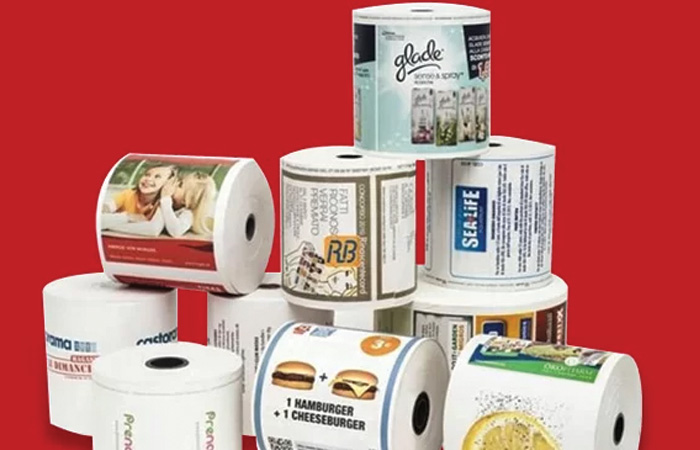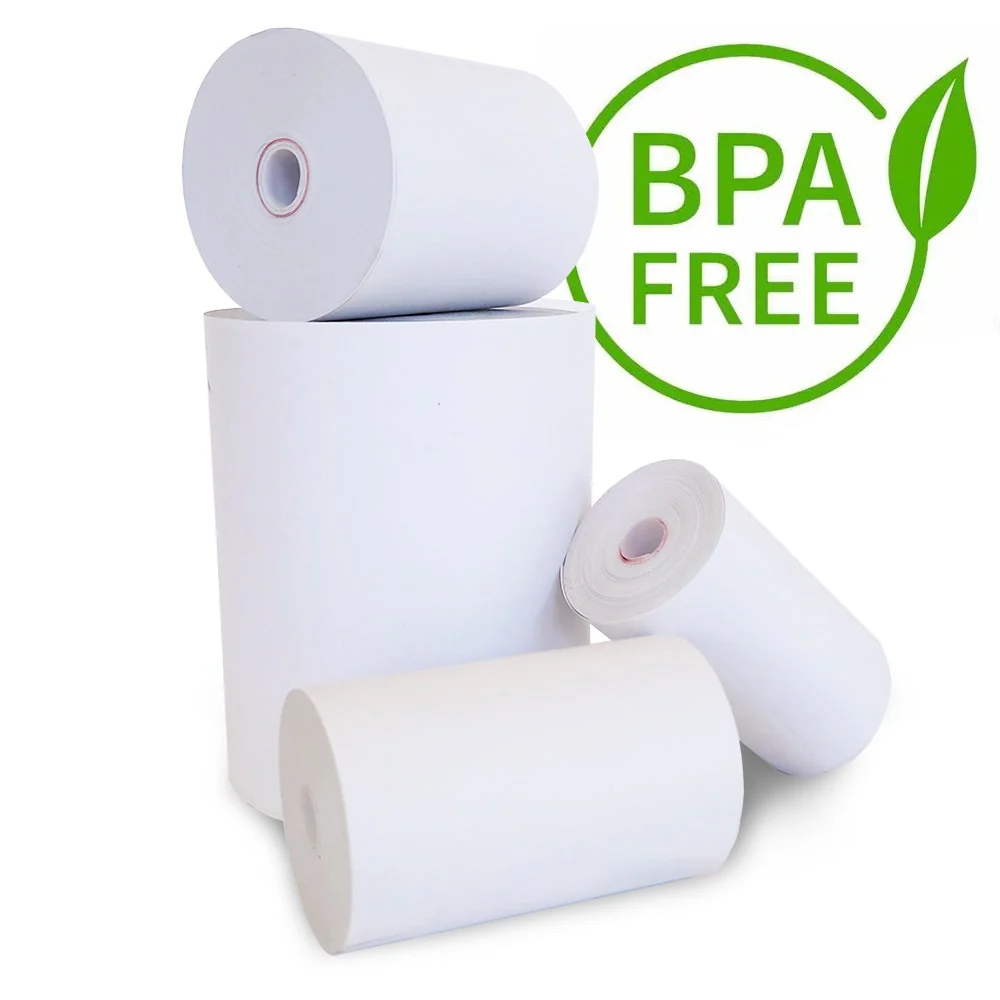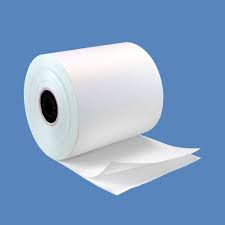Different Types of Thermal Paper

In industries where fast, efficient and high quality printing is critical, thermal paper has become a must have material. Thermal paper is a cost effective and reliable solution for receipts, labels or tickets. Not all thermal paper is created equal, however. Different types of thermal paper are designed for different applications, depending on the specific requirement. In this article we’ll discuss the most common types of thermal paper and their uses.
1. Standard Thermal Paper
Standard thermal paper is the most widely used type and is typically found in retail and hospitality environments. It is used in:
- Receipts: Ideal for point-of-sale (POS) systems due to its cost-effectiveness and smooth surface, which ensures clear print quality.
- ATMs: Commonly used for transaction slips because of its quick response to heat.
Standard thermal paper is known for its affordability and efficiency, but it may not be suitable for long-term record-keeping as the printed information can fade over time.

2. Premium Thermal Papern
Premium thermal paper offers enhanced durability and print quality. It is treated with additional coatings to resist fading, smudging, and moisture. This type is ideal for:
- High-quality receipts: Ensures better legibility and a more professional appearance.
- Documents requiring extended storage: Useful for instance where printed information has to be legible for longer periods.
In industries such as healthcare, banking and logistics, where precision and longevity are critical, premium thermal paper is often used.

3. BPA-Free Thermal Paper
As more and more people begin to worry about the health and environmental implications of Bisphenol A (BPA), more and more businesses are switching to BPA free thermal paper. BPA free options use other chemicals to make the thermal coating, and are safe and comply with environmental regulations. These are commonly used in:
- Retail and hospitality: For receipts that are safe for consumers.
- Government and healthcare sectors: Where BPA free materials are often required by regulations.
4. Top-Coated Thermal Paper
Thermal paper is top coated with an additional protective layer to increase durability. It resists:
- Water and oil: It’s made to be spill proof for environments like kitchens or gas stations.
- Scratches and abrasions: Printed information is ensured to stay intact under harsh handling conditions.
Applications include:
- Shipping labels: Can withstand different weather conditions during transportation.
- Industrial tags: Used for environments with chemical or rough handling.
5. Long-Life Thermal Paper
The engineered long-life thermal paper is designed to hold printed information for long periods, sometimes up to 25 years. It is primarily used for:
- Legal documents: Longevity contracts or agreements.
- Archival purposes: Records that need to be stored for decades in banking and medical records.
This paper undergoes a rigorous test to ensure stability and to be resistant to environmental factors such as light and heat.


6. Two-Ply Thermal Paper
Two copies of a document are produced at the same time by two-ply thermal paper. The first layer is thermal sensitive, the second layer is a carbonless copy. This type is commonly used in:
- Invoice systems: For a customer and the business where a duplicate copy is needed.
- Credit card transactions: A copy is provided for the merchant and the cardholder.
7. Synthetic Thermal Paper
Because of that, synthetic thermal paper is waterproof, tear resistant, and very durable, and is made, not from wood pulp, but from plastic. It is ideal for:
- Outdoor tickets: Like parking tickets or event passes that need to last in bad weather.
- Industrial labels: In manufacturing and logistics where durability is important.
Choosing the Right Thermal Paper
Selecting the right type of thermal paper depends on several factors, including the intended application, environmental conditions, and desired longevity. Here are some tips to guide your decision:
- Consider durability: For harsh environments, opt for top-coated or synthetic thermal paper.
- Evaluate longevity: If records need to last for years, choose long-life thermal paper.
- Check compliance: Ensure the paper meets industry regulations, especially for BPA-free requirements.
Conclusion
Understanding the different types of thermal paper can help businesses make informed choices that enhance efficiency and customer satisfaction. From standard receipts to highly durable labels, there’s a thermal paper solution for every need. By selecting the right type, you can ensure optimal performance and longevity while meeting specific application requirements.

